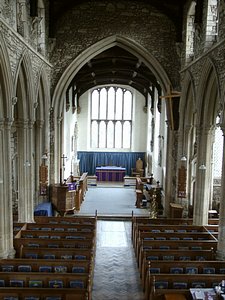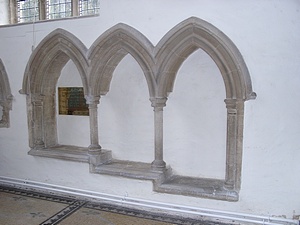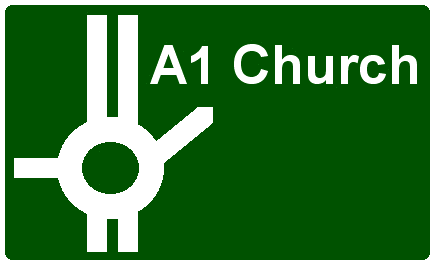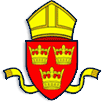The Chancel

 Without doubt the most interesting feature in the chancel at Buckden is a handsome triple graded sedilia of about the year 1300 (the chancel is much older than the rest of the church, being substantially late 13th century, although some rebuilding has occurred). Sediliae were built into the walls of a church to serve as seats in which the clergy could briefly rest during the long ceremonies, for instance while the Creed and the Gloria were being sung. The triple seats at Buckden would be for the Priest, the Deacon and the sub—Deacon, and the gradation in height probably represented the strict order of protocol which was observed.
Without doubt the most interesting feature in the chancel at Buckden is a handsome triple graded sedilia of about the year 1300 (the chancel is much older than the rest of the church, being substantially late 13th century, although some rebuilding has occurred). Sediliae were built into the walls of a church to serve as seats in which the clergy could briefly rest during the long ceremonies, for instance while the Creed and the Gloria were being sung. The triple seats at Buckden would be for the Priest, the Deacon and the sub—Deacon, and the gradation in height probably represented the strict order of protocol which was observed.
Two 13th century doorways are set in the walls of the chancel the doors themselves are not the originals - - that in the north wall leads to the vestry (a modern addition) and that in the south wall would have been the “Priest’s door”, being the vicar’s private entrance to the chancel. In modern times, this door has been used as an entrance to the church by some of the more important local families but it is now kept locked.
Robert Sanderson, Bishop of Lincoln 1662 - 3, is buried beneath the floor of the chancel under a commemorative black floor slab bearing his coat of arms. Dr Sanderson was the author of the preface to the 1662 Prayer Book and in his day was a famous preacher. He was at one time a Royal Chaplain to Charles I who said of him “I carry my ears to hear other preachers, but I carry my conscience to hear Dr Sanderson”.
In the north wall is set a memorial tablet to a later bishop, Thomas Barlow (died 1691) who was known as “the Bishop of Buckden” because he spent all his time at his palace and is stated never to have set foot in Lincoln Cathedral in sixteen years.
Eight rare carved oak panels of the 16th century are to be seen in the chancel incorporated into some modern furniture. They represent the Agony in the Garden, the Betrayal, Pilate washing his hands, the Crowning with Thorns, the Flagellation, the Bearing of the Cross, the Ecce Homo, the Crucifixion.


